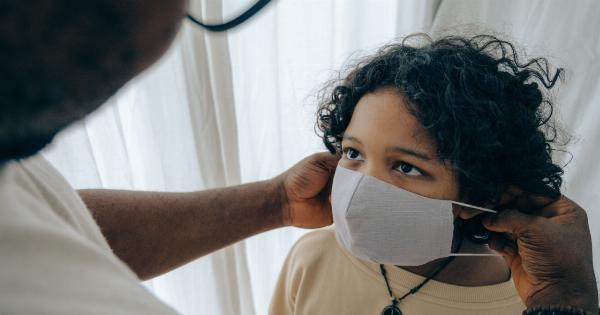Since its discovery in 1976, the Ebola virus has been the cause of numerous outbreaks that have sparked panic around the world.
With its high mortality rate and gruesome symptoms, it’s no wonder that the disease has garnered such fear and attention. However, it is important to investigate the factors that contribute to this panic and dispel any misconceptions surrounding the virus.
The Origins of Ebola
Ebola was first identified in 1976 in a small village near the Ebola River in what is now the Democratic Republic of Congo.
The virus belongs to the family Filoviridae, and there are five known species of Ebola virus, four of which cause severe illness in humans. The virus is believed to be zoonotic, meaning it can be transmitted to humans from animals, most likely fruit bats as the natural reservoir.
The Transmission of Ebola
Ebola is primarily transmitted through direct contact with the blood, secretions, organs, or other bodily fluids of infected animals or humans. It can also spread through contact with surfaces or materials contaminated with these fluids.
At the onset of symptoms, the virus can be highly contagious, but only if the individual comes into close contact with the infected person’s bodily fluids.
The Symptoms of Ebola
Ebola causes a severe and often fatal illness in humans. The initial symptoms of the disease are similar to those of other viral infections, such as fever, headache, muscle pain, and weakness.
As the virus progresses, individuals may experience vomiting, diarrhea, rash, impaired kidney and liver function, and in some cases, internal and external bleeding.
The Mortality Rate of Ebola
One of the reasons for the panic surrounding Ebola is its high mortality rate. Depending on the strain of the virus, the fatality rate can range from 25% to 90%.
The Ebola virus is much deadlier than other infectious diseases, such as the flu, which has a mortality rate of less than 1%.
The Role of Media in Creating Panic
The media plays a significant role in contributing to the panic surrounding Ebola outbreaks. Sensationalized headlines and alarming news reports can induce fear and anxiety among the public.
While it is important to disseminate information about the outbreak, responsible reporting should focus on factual and accurate information to prevent unnecessary panic.
Misinformation and the Spread of Panic
Misinformation about Ebola can also contribute to the panic surrounding the virus. Rumors and myths may spread through social media platforms, leading to unnecessary fear and anxiety.
It is crucial to rely on reputable sources, such as the World Health Organization (WHO) and the Centers for Disease Control and Prevention (CDC), for accurate information about the virus.
The Role of Government and International Organizations
During Ebola outbreaks, governments and international organizations play a crucial role in containing the virus and preventing further spread.
Rapid diagnosis, isolation of infected individuals, contact tracing, and public education campaigns are essential components of an effective response. Cooperation between countries and information sharing can help form a united front against the disease, alleviating some public panic.
Lessons Learned from Previous Outbreaks
Over the years, there have been several major Ebola outbreaks, including the 2013-2016 West Africa epidemic and the 2018-2020 outbreak in the Democratic Republic of Congo.
These outbreaks have provided valuable lessons and strategies for responding to and containing future outbreaks. The development of effective vaccines and experimental treatments has also been a significant breakthrough in combating the virus.
The Importance of Preparedness
While the panic surrounding Ebola outbreaks is understandable, it is crucial to focus on preparedness rather than succumbing to fear.
Adequate funding for research and development, strengthening healthcare systems in affected countries, and improving public health infrastructure are key factors in minimizing the impact of future outbreaks.
Dispelling the Stigma
Another aspect worth investigating is the stigma associated with Ebola. Survivors of the virus often face discrimination and social isolation due to fear and misinformation.
It is important to educate the public about the disease, address stigmatization, and provide support to those who have been affected.
The Way Forward
As we continue to investigate the panic surrounding Ebola outbreaks, it is crucial to approach the issue with knowledge and understanding.
By relying on accurate information, dispelling myths, and focusing on preparedness, we can mitigate fear and panic while effectively responding to future outbreaks.




























